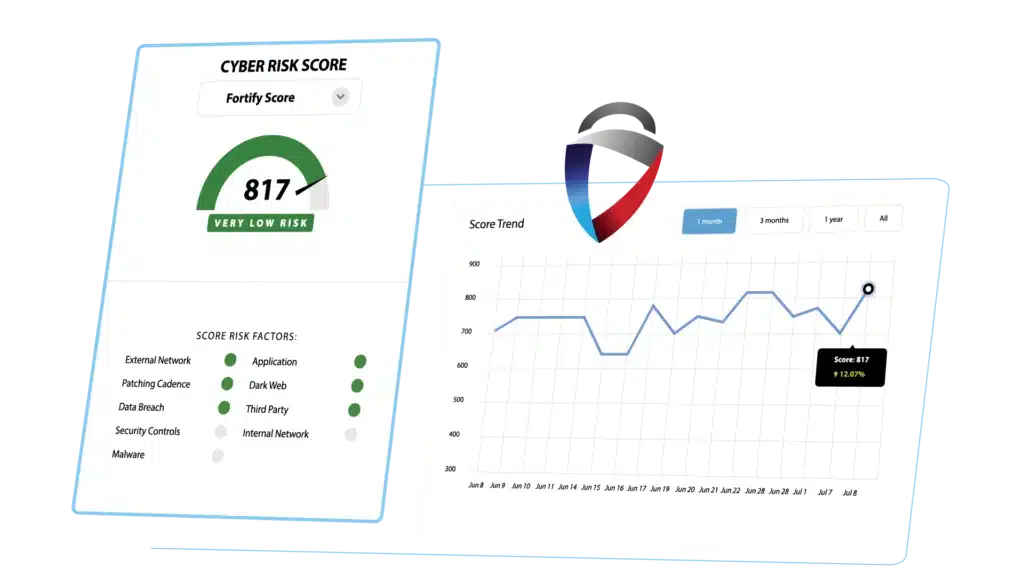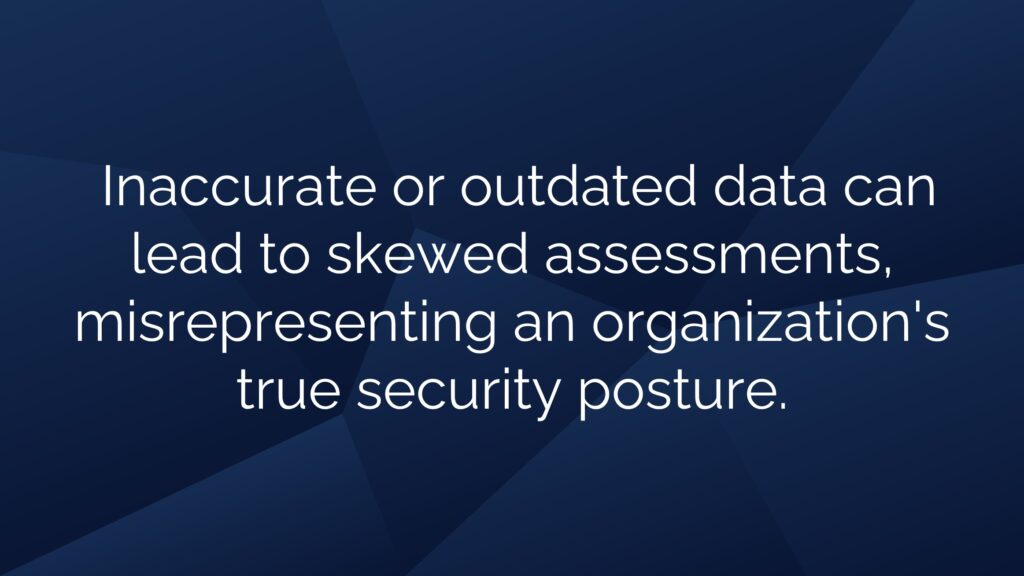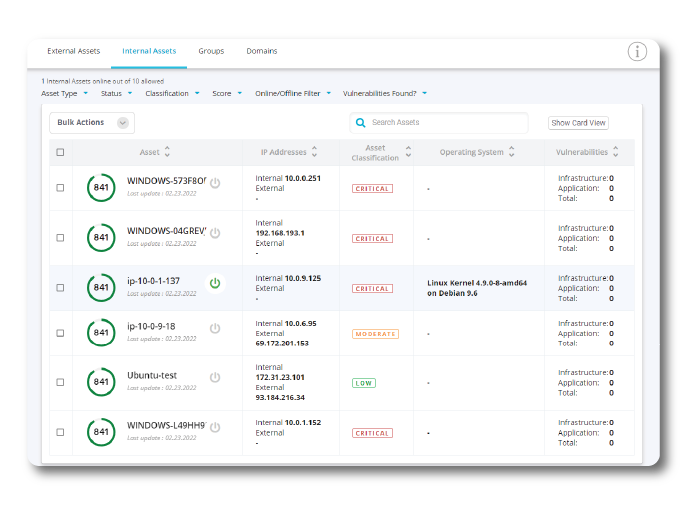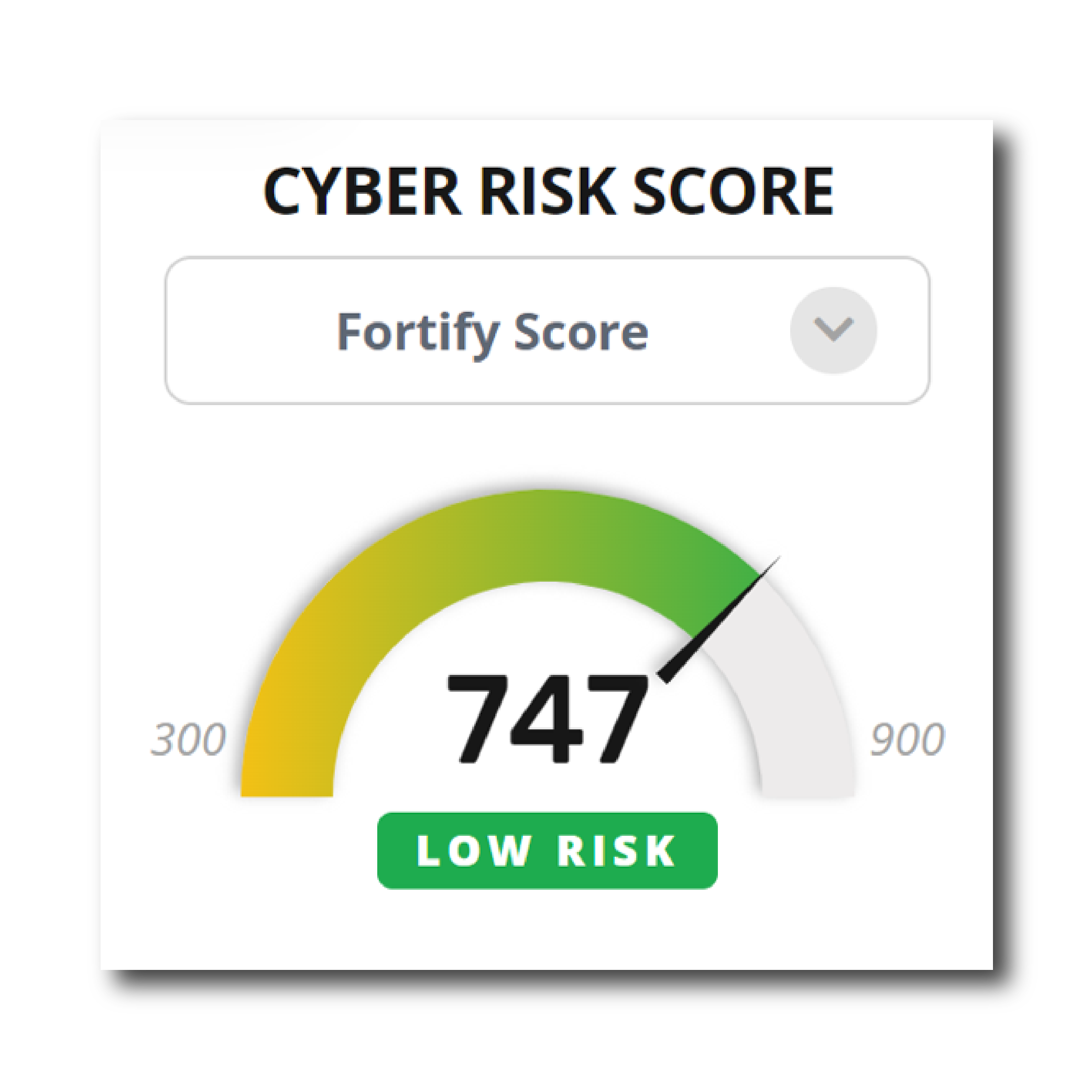- Platform
Platforms
- Solutions
- Industries
Industries
- Why FortifyData
Why FortifyData
"This is an excellent starting point for any organization that wants to get serious about their cyber risk management. The system has the capability to grow as you become more sophisticated in your use"
IT Director
Services Industry - Company
Company
- Partners
Partners
- Resources
Resources
BitSight Competitors
BitSight is a common security ratings provider, having been one of the first and early technologies to provide a security rating. Security Scorecard is another common security rating provider, so much so that many companies try to understand the tradeoff of BitSight vs SecurityScorecard. There are many BitSight competitors nowadays and this post will answer ‘Who are BitSight Competitors?’ BitSight and Security Scorecard started with an idea at a time when there was no other way to quickly get a view of an organization’s, or vendor’s, cyber risk. Now, there are quite a few BitSight competitors to choose from- each with a slight difference in methodology for how they produce a security rating and differentiating capabilities for ongoing cyber risk management.
These BitSight competitors each have their own advancements in methodologies and technologies used in determining cyber risk representation as a cyber security rating.
How Does BitSight Work?
The outcome of the BitSight scoring methodology, along with any alternative security rating provider, is to rate an organization based on various sources of information about the company’s IT assets. BitSight scoring methodology is largely based on passive and non-intrusive assessments in addition to collecting external information related to IT assets like network sensor discovery, data from participating internet service providers and other open-source intelligence (OSINT) data sources. This information would then be analyzed and distilled into a cybersecurity rating or risk score report. The BitSight scoring methodology produces a credit score style numeric rating (BitSight Score Range: 250-900); compared to an alphabet letter grade from Security Scorecard (SecurityScorecard Range: A-F). BitSight competitors offer either an alpha letter grade or credit/numeric score (or both) as their security rating. More on the security rating scale is below.
An Alternative to BitSight is FortifyData

FortifyData is an alternative to BitSight and other security ratings providers that provides a more trusted and accurate security rating, according to clients. FortifyData is a cyber risk management platform that produces a security rating that results from conducting threat exposure analysis and more comprehensive vulnerability assessments.
The FortifyData security rating is based on weekly direct and comprehensive, but non-intrusive, assessments of external IT assets which are confirmed by the client.
What other security ratings vendors don’t provide but FortifyData does, is the ability to classify the identified assets based on business impact and allows for likelihood of risk scenario adjustments to produce a contextualized security rating. This same approach is conducted for enterprise risk management and third-party risk management.
Additionally, FortifyData provides the option to also conduct internal risk assessments to add to the cyber security rating, so you truly get a comprehensive security rating based on external and internal information.
This alternative security ratings approach results in a more accurate and up-to-date security rating that FortifyData clients say is more trusted.
Try an Alternative
What is BitSight Used For?
Understanding and managing cybersecurity risks is paramount and security ratings companies, like BitSight security rating, have emerged as a pivotal tool in this endeavor, offering insights into an organization’s cybersecurity posture and that of their third-party ecosystem.
Security ratings are essentially a measure of an organization’s cybersecurity health. They are derived from a variety of data points, including known vulnerabilities, historical cyber incidents, and other relevant factors. These ratings are often compared to credit scores, but instead of assessing financial risk, they evaluate cyber risk.
BitSight security rating is used for guiding a few aspects of cybersecurity program performance such as:
- Quantifiable Metrics: Instead of vague assurances, organizations can present a concrete security rating score to demonstrate their cybersecurity posture.
- Continuous Monitoring: Security ratings offer a dynamic assessment, allowing organizations to understand the latest risks and vulnerabilities that are impacting their organization. Plus, continuous monitoring is often a compliance requirement. “Continuous” definitions vary can differ among security ratings providers, ask your provider how often actual assessment or data collection is conducted or refreshed.
- Benchmarking: Organizations can compare their ratings with industry peers, identifying areas of improvement and ensuring they meet or exceed industry standards.
What is a good BitSight Score?
The BitSight score ranges from 250-900, with a higher number indicating better security posture. In general, most security ratings providers with a numeric scale indicate that a higher number score indicates lower cyber risk. BitSight score evaluates an organization’s security posture by looking at 4 categories:
- Evidence of compromised systems
- Diligence of security practices
- Risky user behavior
- Public disclosures of data breaches
Is BitSight a vulnerability scanner?
Based on how Bitsight score works, and how some other security ratings providers produce a security rating about an organization, it is a good question to ask. As it pertains to BitSight – is BitSight a vulnerability scanner? No, the BitSight score collects external and publicly available information about your organization based on passive collection and OSINT available data. However, based on their methodology and frequency of assessments the BitSight scoring methodology report may find assets not belonging to your organization, and newer or trending vulnerabilities may not be reflected in their most recent report.
Some BitSight competitors, SecurityScorecard and other security ratings providers, like FortifyData, do provide vulnerability scanning. This methodology enables a direct assessment of an organization’s known and unknown external assets and identifies associated vulnerabilities. This allows for assessment, and security rating, of confirmed assets to the organization which reduces asset misattribution and false positives.
Alternative Security Rating Providers to BitSight and SecurityScorecard
- BitSight
- Black Kite
- FortifyData
- Panorays
- Prevelant
- RiskRecon
- SecurityScorecard
- Upguard
How are BitSight security ratings calculated?
BitSight ratings are designed to provide organizations with an overall snapshot of their cybersecurity posture. These ratings draw upon a variety of data points and indicators, combining them into a composite score that reflects the organization’s security effectiveness. BitSight gathers data from a wide array of sources, including publicly available information and externally observable data points. This once comprehensive approach used to create what was considered a holistic view of an organization’s security but is limited by the information identified from those external sources. Inaccurate or outdated data can lead to skewed assessments, misrepresenting an organization’s true security posture.

Internal security practices and controls that are not publicly disclosed may not be fully captured, potentially leading to an incomplete assessment. Factors such as industry-specific threats, regulatory compliance, and internal security policies may not be adequately accounted for.
This information would then be analyzed and distilled into a cybersecurity rating or risk score report. The BitSight scoring methodology produces a credit score style numeric rating (BitSight Score Range: 250-900)
What does BitSight Technologies do?
BitSight Technologies evaluates the cybersecurity risk of an organization’s external IT assets that they can discover through passive assessment and OSINT data collection methodologies. BitSight then produces a security rating (aka risk score), the BitSight security rating, that provides a measurement of security performance. As one of the early pioneers in the security rating space is one of the reasons, they have been recognized in the BitSight Gartner Magic Quadrant. BitSight pricing is based on how many external companies (e.g. vendors/third parties) a company wants to evaluate using the BitSight security rating. BitSight pricing can be negotiated based on volume of data (e.g. companies) and BitSight pricing is bound by agreed contract terms.
A BitSight Competitor for Vendor Evaluations
Employing security ratings for vendor risk management addresses the challenges inherent in evaluating the security of third-party vendor ecosystems through traditional means. Conventional methods, such as exhaustive audits, can be impractical and time-intensive for many organizations. Distributing Excel-based security questionnaires to gauge a vendor’s security stance necessitates extensive tracking and follow-up efforts. Moreover, these questionnaires are prone to subjectivity and tend to become outdated as new security vulnerabilities emerge over time.

Resource-intensive procedures like on-site visits and penetration testing are often not scalable due to their associated costs. Here, security ratings emerge as a complementary solution that introduces continuous, objective, and actionable insights. Platforms like FortifyData enable organizations to proactively monitor and assess vendors’ security performance, while also automating the security questionnaire process with auto-validated questionnaire that tie the assessment findings with related responses of questions.
This approach facilitates the scaling of third-party risk management programs without requiring a corresponding increase in headcount. The benefits include:
Industry Benchmarking: Vendors can be benchmarked against their industry peers, allowing easy identification of those lagging behind and posing notable risks.
Remediation and Contractual Requirements: Organizations can swiftly initiate remediation efforts with third parties or establish minimum security rating requirements within contractual agreements. The FortifyData platform enables collaboration with vendor security teams with access to the same findings in the platform and task management capabilities.
Continuous Security Ratings: Automation ensures that vendors’ security is rated against the defined security ratings cyber risk model criteria on a continuous basis, providing real-time insights.
Online Questionnaires: By leveraging a comprehensive questionnaire library aligned with regulatory and industry standards (such as ISO 27001, PCI DSS, HECVAT, NIST Cybersecurity Framework, SOC, etc.) or adding their own custom questionnaire, FortifyData helps to automate the questionnaire management process.
Embracing security ratings in vendor risk management optimizes the process, enabling organizations to efficiently assess and mitigate risks while avoiding the pitfalls of conventional methods.
A BitSight competitor for Enterprise Cyber Risk Management
After seeing the quality of data from FortifyData on vendors (as noted above), clients often use the platform to assess their own cyber risk for enterprise cyber risk management. With many of the same benefits of assessing third parties, enterprises can also include their internal risk assessments, cloud security posture, external risks for a comprehensive view.

More Accurate Auto-Asset Discovery: Reduce asset misattributions with FortifyData’s auto asset discovery capability. While other solutions can take up to 4 months to update new asset inventory, we continuously search and identify new assets on a weekly basis.
Continuous Infrastructure Security Assessments: Reduce asset misattributions with FortifyData’s auto asset discovery capability. While other solutions can take up to 4 months to update new asset inventory, we continuously search and identify new assets on a weekly basis.
Enriched with Dark Web and Cyber Threat Intelligence: Our proprietary intelligence feeds alert clients when data has been compromised, either within your organization or through a third-party entity. Through continuous dark/deep web scanning of files and databases across social media, un-indexed and transient deep websites, we will alert you of exposed company records, including leaked information, stolen credentials and confidential documents.
Regulatory Compliance Management: We help you assess your organization’s and your third party’s level of compliance, and continuously monitor the applicable technical controls with industry security standards, such as PCI DSS, HIPAA, SOC 2, ISO 27001, NIST CSF / SP 800-53 / SP 800171, 23 NYC 500 and other customer-specific requirements. We also offer recommendations on how to remediate any gaps in compliance.
Benefits for enterprise cyber risk management include:
- Gain insights into the effectiveness of their investments in cybersecurity controls or technology.
- Sync investments and strategies with those addressing the highest-priority risks.
- Optimize the allocation of limited resources dynamically, focusing on critical domains.
- Foster informed discussions about cybersecurity with non-technical stakeholders, including Board members, Vice Presidents, regulators, investors, and strategic business partners.
- Evaluate internal security performance against industry benchmarks.
Try an Alternative with FortifyData Security Ratings

FortifyData provides a trusted and accurate security rating based on weekly external attack surface assessments of your confirmed IT asset inventory. We take into account asset classification, likelihood adjustments and compensating controls and enrich the findings with dark web discoveries and cyber threat intelligence to give you a contextualized security rating.
FortifyData is an industry-leading Continuous Threat Exposure Management (CTEM) company that enables the enterprise to manage cyber risk across the organization. By combining automated attack surface assessments with asset classification, risk-based vulnerability management, security ratings and third-party risk management, you get an all-in-one cyber risk management platform.
